Hard Work, Long Hours, Local Families
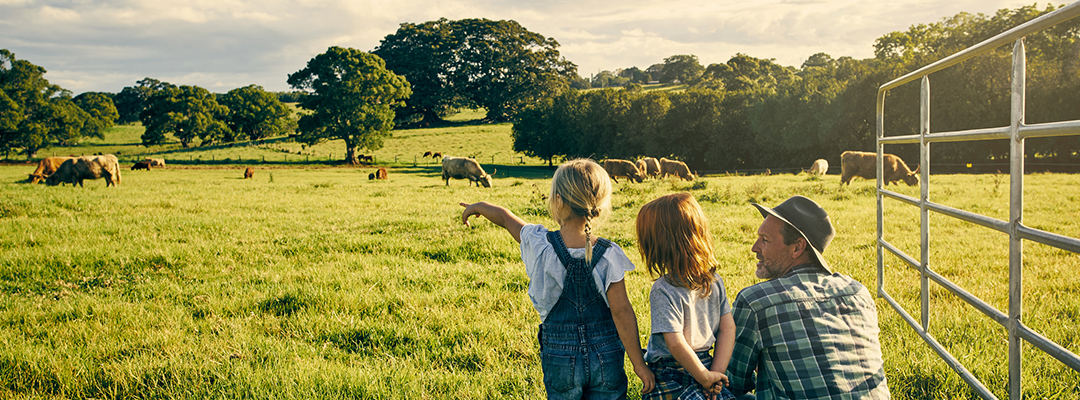
Pride and promise are two words that can be used to describe dairy farmers and the work that they dedicate their lives to. We’re sure there are many more, but for hundreds of years, dairy farmers have stood by their commitment to their customers – that has never faltered.
Not only does the job of a dairy farmer require skill and strength, but through caring for and spending a great deal of time with their dairy cows, a special connection is often established. Maintaining a stress-free environment, ensuring fair treatment, and providing health and nutrition support are all factors that go into nurturing this special relationship.
While the relationship between farmers and their cows is key to a sustainable business, these hard working farmers have connections that reach so far beyond their fields and farms. These connections include their own families, their communities, professionals – from vets to nutritionists, their customers, and the suppliers.The process of getting milk from the cow to your fridge is complex and should never be taken for granted. This is especially true when a global pandemic sweeps through and completely changes the way that the modern day dairy farmer does business.
Particularly throughout the COVID-19 pandemic, there has been a significant shift in the number of people who are using food delivery services and milk delivery programs to ensure that they receive their dairy products in a safe and timely manner.
In the following blog, we’ll take a look at the history of milk delivery, the hardships that dairy farmers and milk delivery services have seen over the years, and more currently what is causing an increase in the demand for those milk delivery services.
History of Milk Delivery
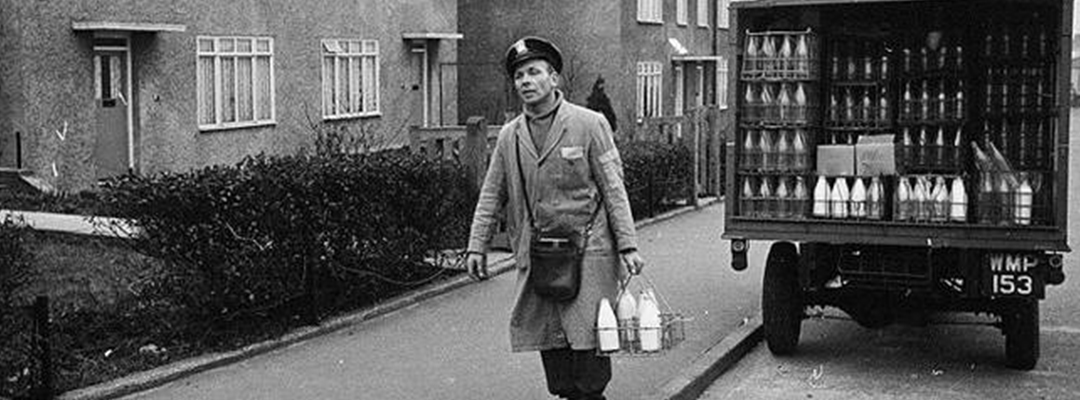
Chances are that you’ve heard mention of milkmen from generations past with glass bottled milk always being a highlight of the story. A sense of nostalgia likely accompanies the stories, but as we all know, facts are key to truly understanding the early beginnings of milk delivery.
According to Drink Milk in Glass Bottles, the first home milk delivery occurred in the late 1700s when it was common practice for most families to have at least one cow. As urban areas developed and there was less room to maintain your own dairy cows, people began to purchase milk from local farmers. The first milk delivery is said to have taken place in 1785 in rural Vermont.
Milk wasn’t always delivered in glass bottles. At one point in time, the milkman would arrive with large barrels of milk which would be used to fill whichever containers customers preferred. With the limited shelf life of milk, delivering it daily was the safest and most cost-effective way to get milk to customers. About 30 percent of milk was still delivered to homes in the 1960s.
In 1878 the first glass milk bottle was patented in the United States, known then as the Lester Milk Jar. Over the next several decades, the glass bottle would go through a number of innovative changes – like lids in 1884 and glass etching in the 1920s.
Delivery Downturn
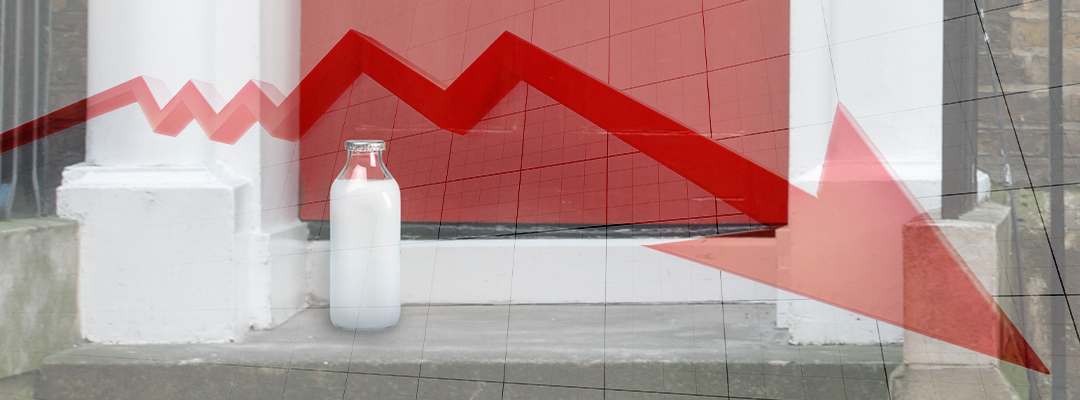
Technology, innovation and shifting patterns in consumption are at the root of the milk delivery downturn that started to happen in the mid-1900’s. Shortly after 1915, mechanical ice boxes began appearing in the American market, which caused a decrease in the number of visits that the milkman had to make and the amount of product that was delivered during those visits.
Some of the most recent numbers show that the number of licensed dairy operations in the United States have decreased by more than 50 percent between 2003 and 2019 – 70,375 in 2003 to 34,187 in 2019.
A number of factors are responsible for this steep and noticeable decline, including the introduction and success of the refrigerator, supermarkets and commercial locations with expansive product offerings, the cost of specialty products (smaller batch dairy products for example), an increase in the number of adults from each household who are working full-time, inflation and rising gas prices.
There is a recognizable trend that shows dairy operations and milk delivery services who continue to diversify by offering value-added products like cheese, yogurt and ice cream, or who have identified how to expand their market, are able to remain relevant, maintaining their existing customer base, and even grow the delivery aspect of their business.
Lockdown, Deliveries Up
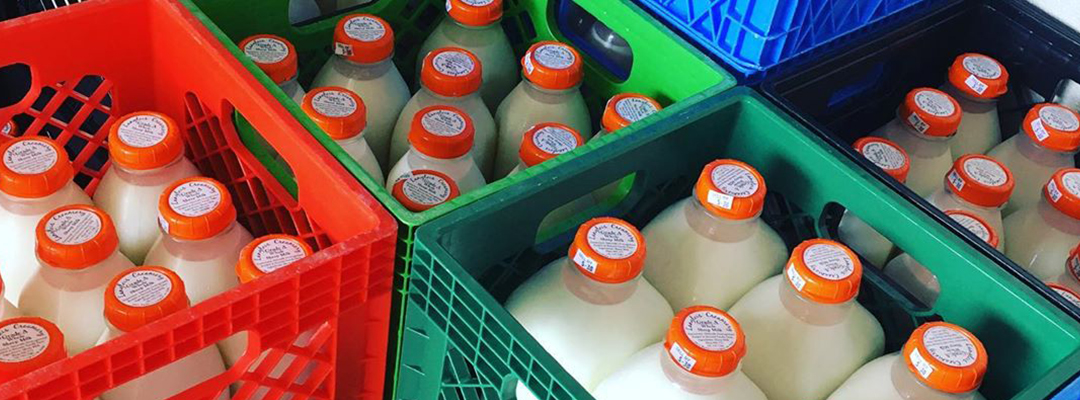
Photo credit: Langlois Creamery https://www.instagram.com/p/B_VdT76HpKe/
Now that we’ve looked at how milk delivery services were introduced, how they flourished over the years, and what was responsible for their great decline, let’s take a look at why these nostalgic services are coming back in such a significant way.
The United States Department of Agriculture (USDA) Economic Research Service recorded that while milk consumption was lower, the consumption of dairy products including cheese, yogurt, and butter all reached a record high in 2019. Studies show that people value the versatility of dairy in new, delicious and innovative products, leading to their ongoing interest in the health and nutrition benefits.
In early 2020, North America began to experience the effects of COVID-19. Once the infectious disease was established as a pandemic, the world shifted almost immediately. Since the onset of the virus there has been a significant shift in people’s lifestyles, which would include their regular buying patterns and habits.
The public – regardless of geographic location – was instructed to adhere to strict health and safety regulations and protocols, which included leaving your home only for essential supplies or to provide an essential service, which included healthcare providers, grocery clerks, first responders, construction and maintenance workers, and many more. This meant that anyone who formerly worked in an office setting was now working remotely in the safety and comfort of their own home.
With coronavirus cases rising, people aren’t venturing out to shop as much as they did before, causing a blow to mall retailers and small businesses that were not categorized as essential services during the first days of the virus. In addition to its impact on public health, COVID-19 has caused a major economic shock, hitting small businesses particularly hard.
To lessen the impact being seen by small or locally-owned businesses, people are building relationships with and supporting these ventures alternatively and more frequently than they had done previously, creating a wholesome and enriching experience.
People want to support local businesses and are willing to go out of their way to do so through e-commerce, curbside pickup, or delivery. According to a Nextdoor survey, 72% of members believe they will frequent local businesses more often after the pandemic. The National Retail Federation reports that 49% of consumers “have made a purchase specifically to support local small businesses during the pandemic.”
The concept of having food products in any variety delivered directly to your front door with nothing more than a few clicks is a convenience that has never been more prevalent than it is in 2020. Of course, it has been rising in popularity with the introduction of smartphones, but it’s taken an especially significant role in the lives of anyone who enjoys the experience of supporting local businesses, regardless of their demographic.
Milk delivery services straight to your home are enticing for the elderly, who are said to be at higher risk of contracting the virus. By limiting their exposure to those outside of their home, they are dramatically reducing the chances that they may end up contracting the potentially fatal virus. Not only are there health benefits to this demographic using services such as milk delivery, but it also provides an alternative to having to carry what can often become a heavy load of groceries to their home from the supermarket.
Many delivery apps and services, whether it be grocery delivery, fast food delivery, or specialty products like coffee, flowers, or dairy, are all offering non-contact delivery options to further promote the safety of the consumer and the employees. While the order’s arrival is more often expected than not, delivery services and apps are often equipped with programming that will alert the customer that their product or package has arrived safely on their front step.
Payment is accepted over the phone or through the website in which the product was requested, making the need for human contact completely unnecessary.
When it comes to milk delivery, your product is often dropped off in an insulated box on your front porch and empty, rinsed bottles leave with the driver – usually before the sun even rises. Beyond the pandemic, services like these are beneficial for those who don’t drive or aren’t able to easily carry groceries to their homes.
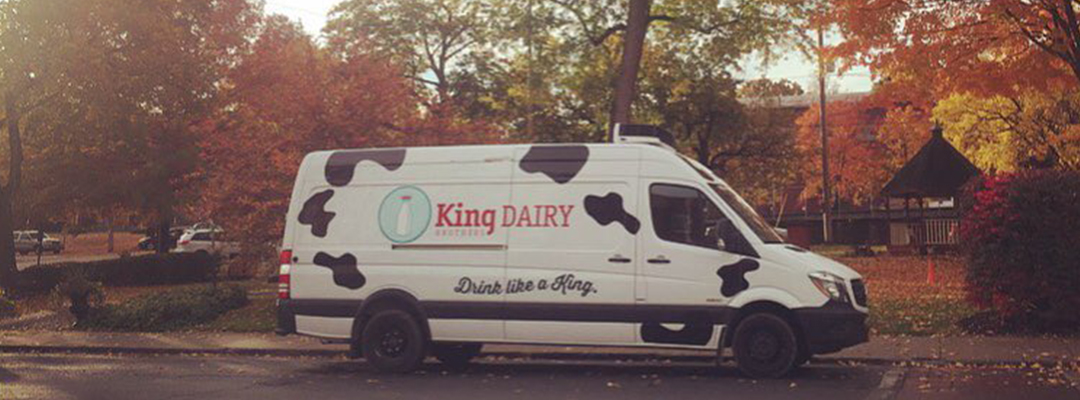
Photo Credit: Instagram https://www.instagram.com/p/BL1DxF7jSwD/
When protocols went into place earlier this year in an effort to curb the spread of COVID-19, establishments in the food service industry were forced to close their doors. Saratoga County’s King Brothers Dairy saw a huge decline in sales, but almost immediately experienced a boost in the demand for their home delivery. According to co-owner, Jeff King, orders for the home delivery service have doubled since New York’s coronavirus control measures went into effect in mid-March.
“People are going back to products they grew up with and trusted,” stated Paul Zieminsky, executive vice president of global innovation at the National Dairy Council.
With so much more time being spent at home, people are not only cooking more home-cooked meals, but they’re also paying closer attention to their eating habits and the ingredients that are making up their diet. It seems that people are structuring their diets around more whole ingredients as they have more time to focus on making meals as opposed to ordering them, and are even relying on meal subscription boxes like the ones included here.
While studies have shown that people are snacking more during the pandemic for a number of reasons, there are also direct links to the shopping habits of people who are either making visits to the grocery store or having items delivered.
While deliveries to homes are going up, it’s important to note that commercial deliveries are lower due to restaurants being closed or operating on limited hours, so this is a very welcome change for commercial dairy farmers and operations.
What Does Delivery Look Like Post-Pandemic?
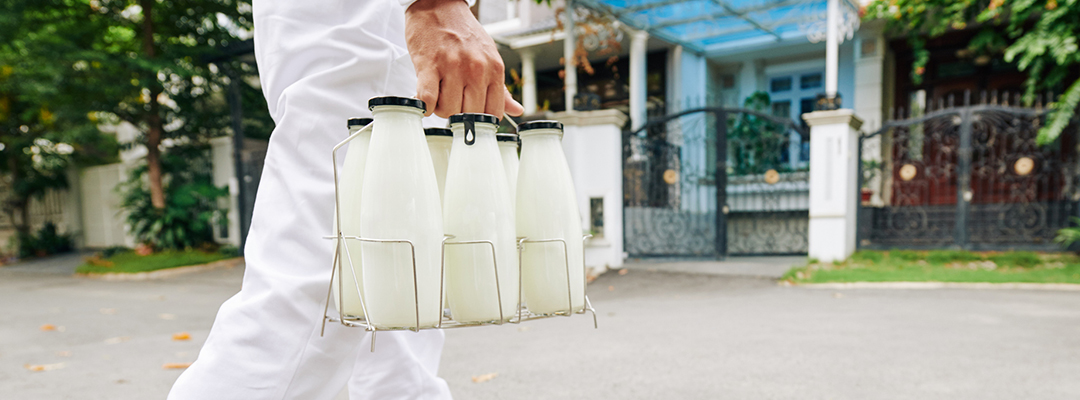
“We really can’t, you know, predict what demand is going to be, but these prices have brought on extra milk production,” shared Mike North, president of Commodity Risk Management Group.
As things normalize, with more eating at home and a little less foodservice business than before the pandemic and a little different approach to eating out thanks to delivery services, retailers and foodservice groups are going to align themselves with those trends.
The pandemic has encouraged more people to sign up for or continue their subscriptions with milk delivery companies for a number of reasons that we listed above and while the demand for delivery services like the modern-day milkman remain uncertain, we’re hoping that consumers continue to see not only the value in an offering such as this, but also learn to appreciate the quality and health benefits of the product, the dedication and the livelihood of the people responsible for its manufacturing, and the economic impact that farm fresh milk could experience.
As food delivery and services apps and websites are developed and tested by real life customers, more and more people are encouraged to give them a try on their own. Companies like Doorstep Dairy and Milk Run Online are just a few of the websites that can be used to deliver produce and farm fresh milk to your home.
Curious if you have any milk delivery services in your area? Find a retailer near you by clicking here.
